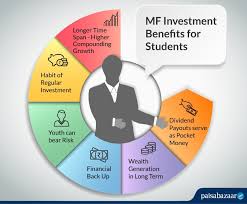

Simple Investment Strategies for Students!
For students looking to start investing, one of the simplest strategies is to begin with low-risk, long-term investments such as index funds or exchange-traded funds (ETFs). These funds are a collection of stocks or bonds that track a broader market index, such as the S&P 500, and provide a diversified investment. Since they cover many different companies or sectors, they help reduce the risk compared to investing in individual stocks. The beauty of index funds is that they require minimal effort to manage, making them perfect for students who may not have time to research individual companies. Plus, they usually come with lower fees, which is great for students on a budget.
Another strategy for students is dollar-cost averaging, which involves investing a fixed amount of money at regular intervals (e.g., monthly) regardless of the market's ups and downs. This approach helps to reduce the impact of short-term volatility and lowers the risk of investing a lump sum at an inopportune time, such as during a market peak. By contributing regularly, students can build wealth over time without worrying too much about timing the market. This strategy works especially well when paired with automatic investment features available through brokerage accounts.
For those with a smaller budget, starting with micro-investing apps like Acorns or Stash can be a great way to dip a toe into the world of investing. These apps round up everyday purchases to the nearest dollar and invest the spare change into diversified portfolios. While the returns may be modest at first, micro-investing allows students to learn about the market without risking a large portion of their money. As their understanding and financial situation grow, they can gradually increase their investment contributions.
Finally, students should take advantage of tax-advantaged accounts like Roth IRAs (Individual Retirement Accounts), if available. A Roth ira allows individuals to invest after-tax money and grow their investments tax-free, meaning they won't have to pay taxes on any gains when they withdraw in retirement. Since students often have a lower income during their academic years, the Roth ira is a great way to take advantage of their low tax bracket now and benefit from compound growth in the long run. Even small contributions can make a big difference over time, especially when the power of compounding works in their favor.




 click and follow Indiaherald WhatsApp channel
click and follow Indiaherald WhatsApp channel